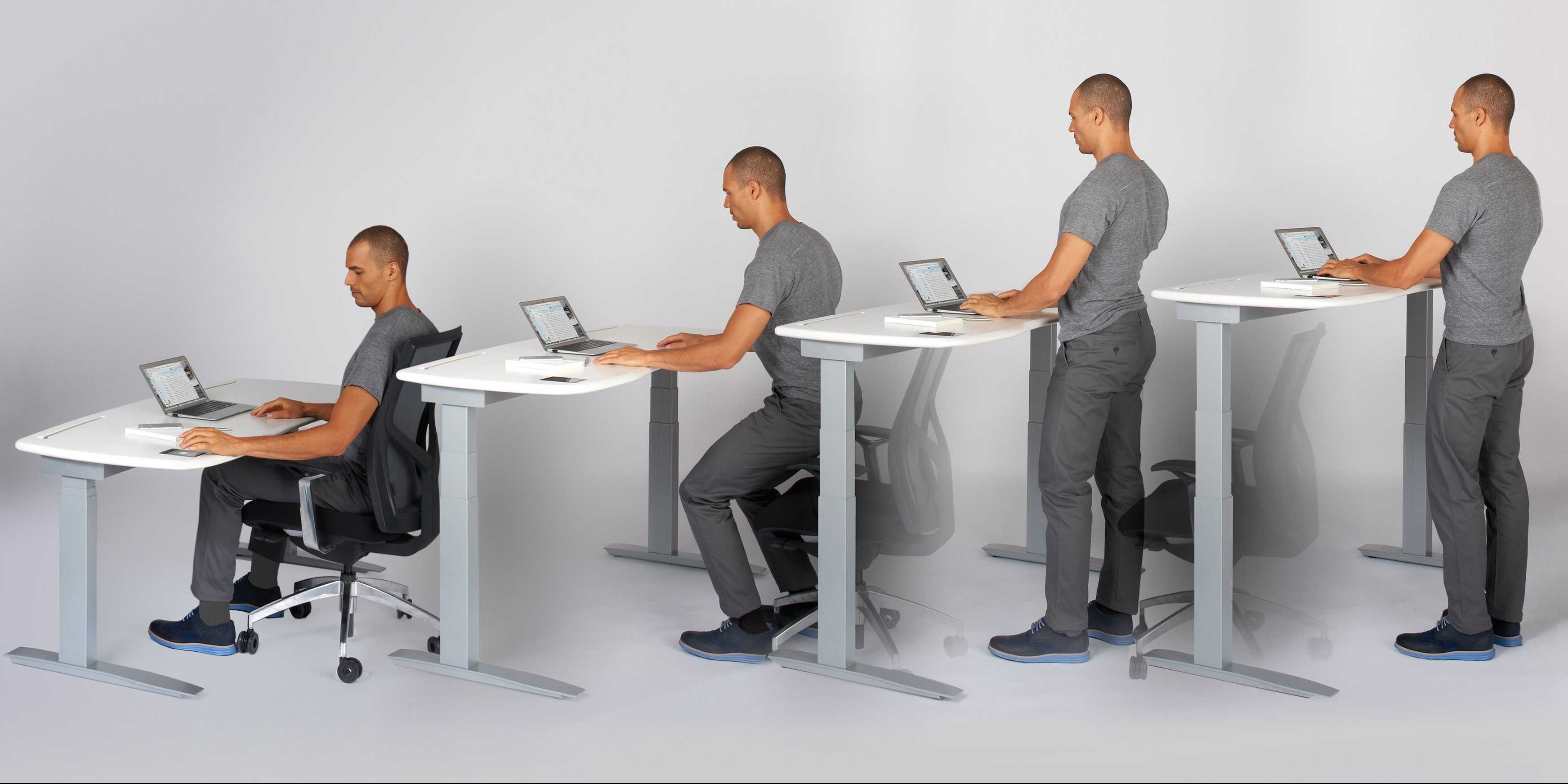Standing and sit-stand desks seem to be the current rage in employee wellness. As an increasing number of jobs require employees to work at a computer, the perils of a sedentary lifestyle have emerged as a mainstream concern. Employers are considering standing desks as an easy and cost-effective way to better the health of their workers, and some data even supports that these apparatuses have the potential to improve life expectancy. However, despite all of the popularized benefits, some argue that standing all day, which presents its own set of problems, may not actually be the most optimal countermeasure to combat the effects of prolonged sitting.
Research has shown that excessive sitting is associated with an abundance of serious health problems, including obesity, high blood pressure, diabetes, cardiovascular complications, cancer, and even reduced life expectancy. In various experiments, workers who spent most of the day standing as opposed to sitting reported decreased physical discomfort, lower levels of fatigue, and better moods. Another study evaluated that reducing time spent seated by a mere three hours per day can increase life expectancy by two years on average.
 It’s no surprise that standing desks seem to be the most viable intervention to address these concerns. These desks are a relatively cost-effective, sustainable solution that succeed in reducing sitting time in the workplace.
It’s no surprise that standing desks seem to be the most viable intervention to address these concerns. These desks are a relatively cost-effective, sustainable solution that succeed in reducing sitting time in the workplace.
The problem is, though, that there is minimal evidence to support that sedentary standing is actually healthier than sedentary sitting. In fact, a 16-year study by Exeter University followed 5,000 participants and concluded that it does not make a notable difference in health at all. As stated by Melvyn Hillsdon from the university’s health sciences department, “any stationary posture where energy expenditure is low may be detrimental to health, be it sitting or standing.”
According to other findings, standing all day presents its own problems. Prolonged standing poses a variety of health risks, such as “lower back pain, increased risk for varicose veins and deep vein thrombosis, numerous podiatric problems, and even increased risk of heart disease.” Additionally, it has been shown that the brain is more efficient in completing various, concentration-demanding tasks while seated, which implies that standing desks could be a potential detriment to workplace productivity. This assertion is less conclusive, as some studies have shown the opposite effect (improved productivity from standing desks).
As a business leader, it is imperative to consider all of the factors before introducing standing desks to the office. They can be an extremely beneficial intervention to the workplace to reduce sitting time and incite more movement, but every decision involves inherent risk and limited rewards. No matter which kind of desk options fill the office, business leaders should encourage their employees to move more and decrease sedentary time by taking breaks to walk around during the day. Also, the case for standing desks does not need to be limited to health benefits. Successful employers should create workplaces that talented individuals want to thrive at, and for many employees, sitting all day is not something they want to do.
For employers that do choose to offer standing desks, it is imperative that they also invest the necessary resources to maximize the gains from them. Specifically, employees that improperly use standing desks limit the benefits and increase the adverse impacts they deliver. This is why employers should also provide educational resources on proper standing desk form.












